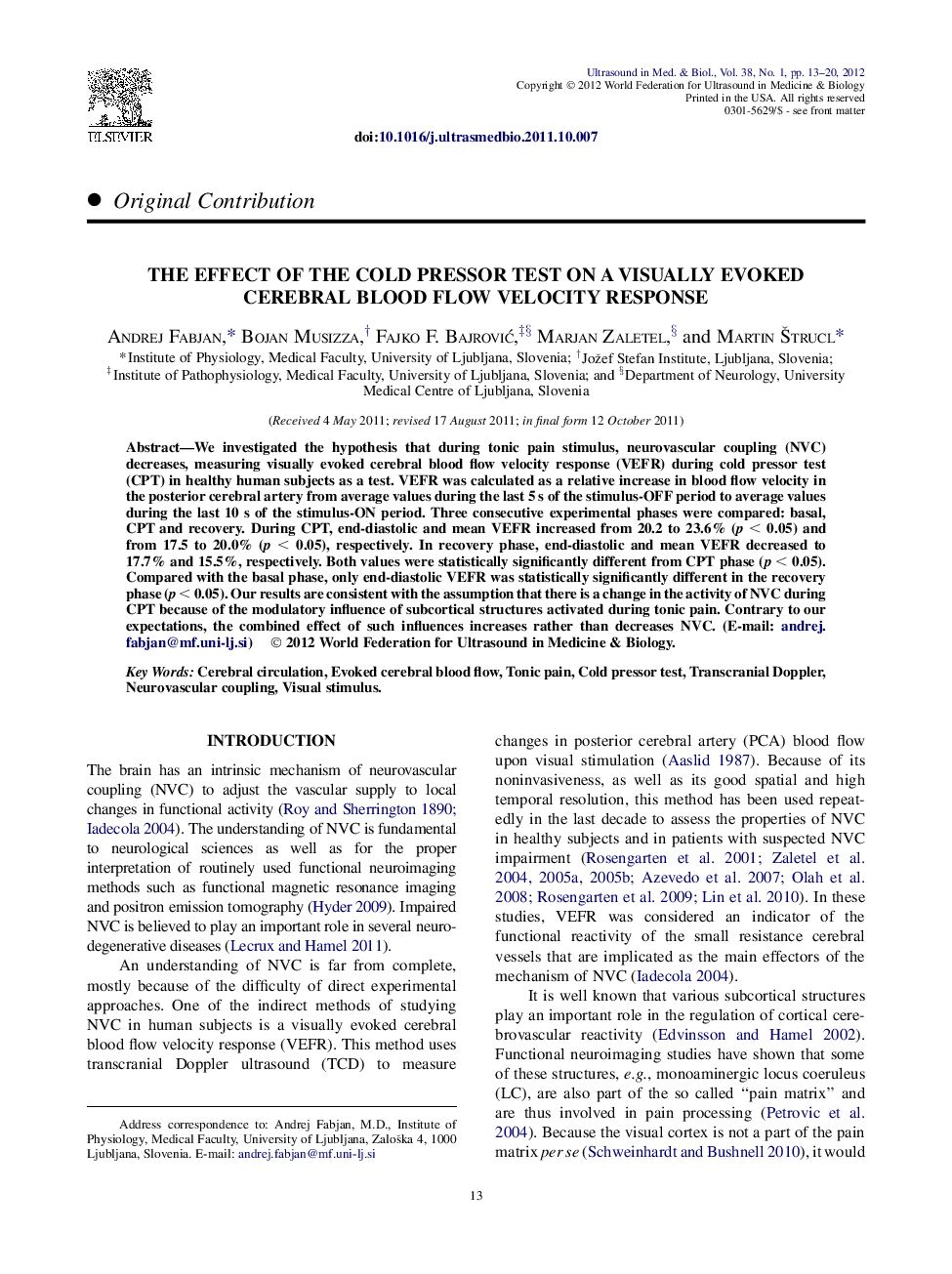| Article ID | Journal | Published Year | Pages | File Type |
|---|---|---|---|---|
| 1761559 | Ultrasound in Medicine & Biology | 2012 | 8 Pages |
Abstract
We investigated the hypothesis that during tonic pain stimulus, neurovascular coupling (NVC) decreases, measuring visually evoked cerebral blood flow velocity response (VEFR) during cold pressor test (CPT) in healthy human subjects as a test. VEFR was calculated as a relative increase in blood flow velocity in the posterior cerebral artery from average values during the last 5 s of the stimulus-OFF period to average values during the last 10 s of the stimulus-ON period. Three consecutive experimental phases were compared: basal, CPT and recovery. During CPT, end-diastolic and mean VEFR increased from 20.2 to 23.6% (p < 0.05) and from 17.5 to 20.0% (p < 0.05), respectively. In recovery phase, end-diastolic and mean VEFR decreased to 17.7% and 15.5%, respectively. Both values were statistically significantly different from CPT phase (p < 0.05). Compared with the basal phase, only end-diastolic VEFR was statistically significantly different in the recovery phase (p < 0.05). Our results are consistent with the assumption that there is a change in the activity of NVC during CPT because of the modulatory influence of subcortical structures activated during tonic pain. Contrary to our expectations, the combined effect of such influences increases rather than decreases NVC.
Keywords
Related Topics
Physical Sciences and Engineering
Physics and Astronomy
Acoustics and Ultrasonics
Authors
Andrej Fabjan, Bojan Musizza, Fajko F. BajroviÄ, Marjan Zaletel, Martin Å trucl,
